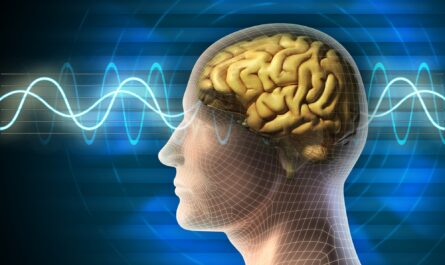Researchers at the University of Michigan (U-M) have developed an innovative tool to enhance our understanding of how neurotransmitters like dopamine and epinephrine interact with neurons. These chemicals are among a vast array of signals that are processed in the brain via G protein-coupled receptors (GPCRs), proteins located on the surface of neurons that receive messages in the form of proteins, sugars, fats, and even light, which influence cellular behavior.
The findings were published in the journal Proceedings of the National Academy of Sciences.
GPCRs play a crucial role in numerous biological functions, making them a primary focus for treating diseases; over one-third of FDA-approved drugs target GPCRs. However, to fully comprehend how various molecules interact with GPCRs, researchers require a means to detect those molecules throughout the brain with high spatial resolution.
“The challenge in our field has been striking the right balance between a detailed view and the whole picture across the brain,” said Wenjing Wang, a neuroscientist at the U-M Life Sciences Institute.
Peng Li, a faculty member at LSI, explained that most existing tools can detect a neural modulator either in a small brain region with high spatial resolution or in the entire brain with very low resolution.
“But we need to identify the cells that respond to the neuromodulators across various brain regions, in high resolution,” Li added.
In the study, Wang, Li, and their colleagues introduced a new chemical tool that addresses this challenge for three chemicals that all target GPCRs.
Wang’s lab at LSI employs protein engineering to create technologies that can detect how signaling molecules traverse the brain to engage specific neurons. They previously developed a tool to identify the presence of opioids, another GPCR binding partner, at a cellular level.
When the molecule is detected, the tool generates a permanent fluorescent mark in the cells. Consequently, researchers can observe the specific cells that are highlighted, as well as the overall picture of cells across the brain.
This latest work extends the utility of that sensor to detect multiple types of GPCR activators, beyond just opioids. The team has thus far tested the tool with opioids and epinephrine in cultured neurons and mouse models. Additionally, they expanded the tool to employ both green and red fluorescence, enabling the tracking of multiple molecules simultaneously.
“We’ve gone from detecting just opioids to having a tool that we can easily modify for various signals that interact with GPCRs,” Wang said, who is also an assistant professor of chemistry at the U-M College of Literature, Science, and the Arts. The ultimate goal is to study the interplays of different signaling pathways concurrently.
The team emphasizes that while the tool offers valuable visualizations of how signals travel across neurons for postmortem analysis, it cannot be used to track chemicals in real time, as it takes several hours for the fluorescence to manifest. Nevertheless, it represents a significant step forward in improving our understanding of neuronal signaling and the role of GPCRs as drug targets.
“Ideally, we aim to create a brain map for multiple neuromodulators concurrently, providing a comprehensive understanding of the sites of neuromodulation,” Li said, who is also an assistant professor at the U-M School of Dentistry.
Note:
1. Source: Coherent Market Insights, Public sources, Desk research.
2. We have leveraged AI tools to mine information and compile it.




